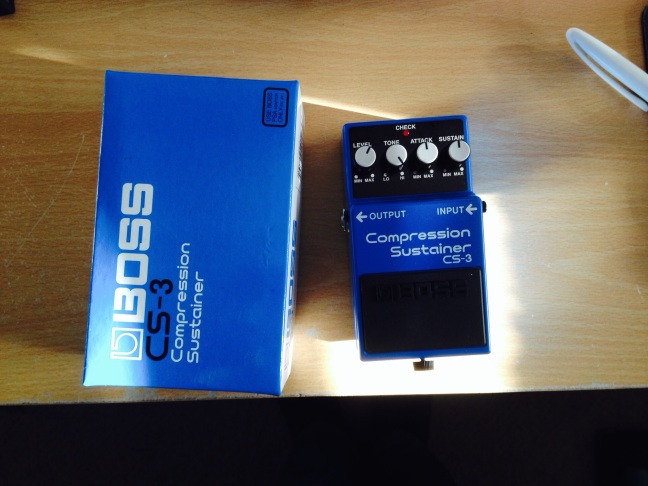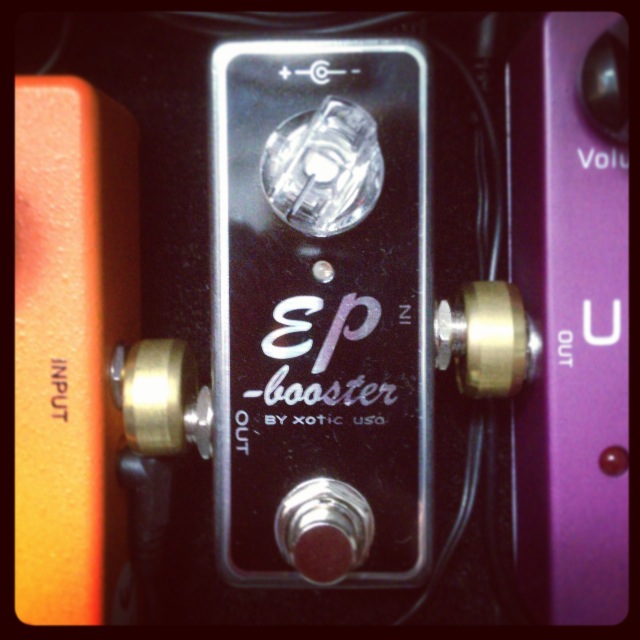
Here is the first Guitar pedal review of 2014! This times it’s the Boss CS3. I will start with a little info on this pedal, as many people are completely lost when it comes to Compressor pedals.
The Boss CS3 is to be used with an electric guitar; its main function is to compress the high signals and boost the low signals within your sound, helping you create sustain. The compression basically evens out your playing making notes appear to be at equal volumes regardless of how hard you attack the string. This makes it a great pedal for Funk and Country players trying to create an even and rounded sound.
The make up of the CS-3 Compression is pretty straightforward, with just four knobs that each control a different aspect of your sound. On the far right to left you have Level, Tone, Attack, Sustain, you could mess around with this pedal for hours creating different sounds. The build of the pedal is the usual Boss tank job, very sturdy and made to last. I have always liked this design as you can hit it as hard as you want when gigging and you know your not going to break it.
Price wise, this pedal is not to bad, generally costing around £65-£70 and around £35-£45 on EBay. There are a huge amount of pedals in the same price range on the market now, some even cheaper than this. But the Boss brand goes a long way! Which makes it a lot easier to sell if you don’t get on with it.
So what did I think of the pedal? Well I found it very hard to work with to be honest, I bought it on the off chance that it would sit nicely on my board and it would be an essential member of my pedal collection.
At first I loved it and thought it sounded amazing, and I felt it improved my overall guitar tone, but it did seem to create a slight hum which I couldn’t get rid off when being used with other pedals. I am a big fan of my Jimi Hendrix Fuzz Face and this combined with the Boss CS3 just sounded a mess, It also sounded made my Bad Monkey overdrive sound a little muddy. I am not saying this isn’t a good pedal; it just didn’t work for the sounds I want to create. After trying it on a daily basis for over a week I decided it just wasn’t for me, and I put it back into the world of EBay and spent the money on a new pedal ☺
Overall I think the pedal was pretty great, I just struggled to find a purpose for it within the music I enjoy playing. I will continue to look for a Compression pedal that works for me; I have heard great things about the MXR dyna comp, so watch this space.


